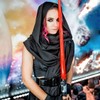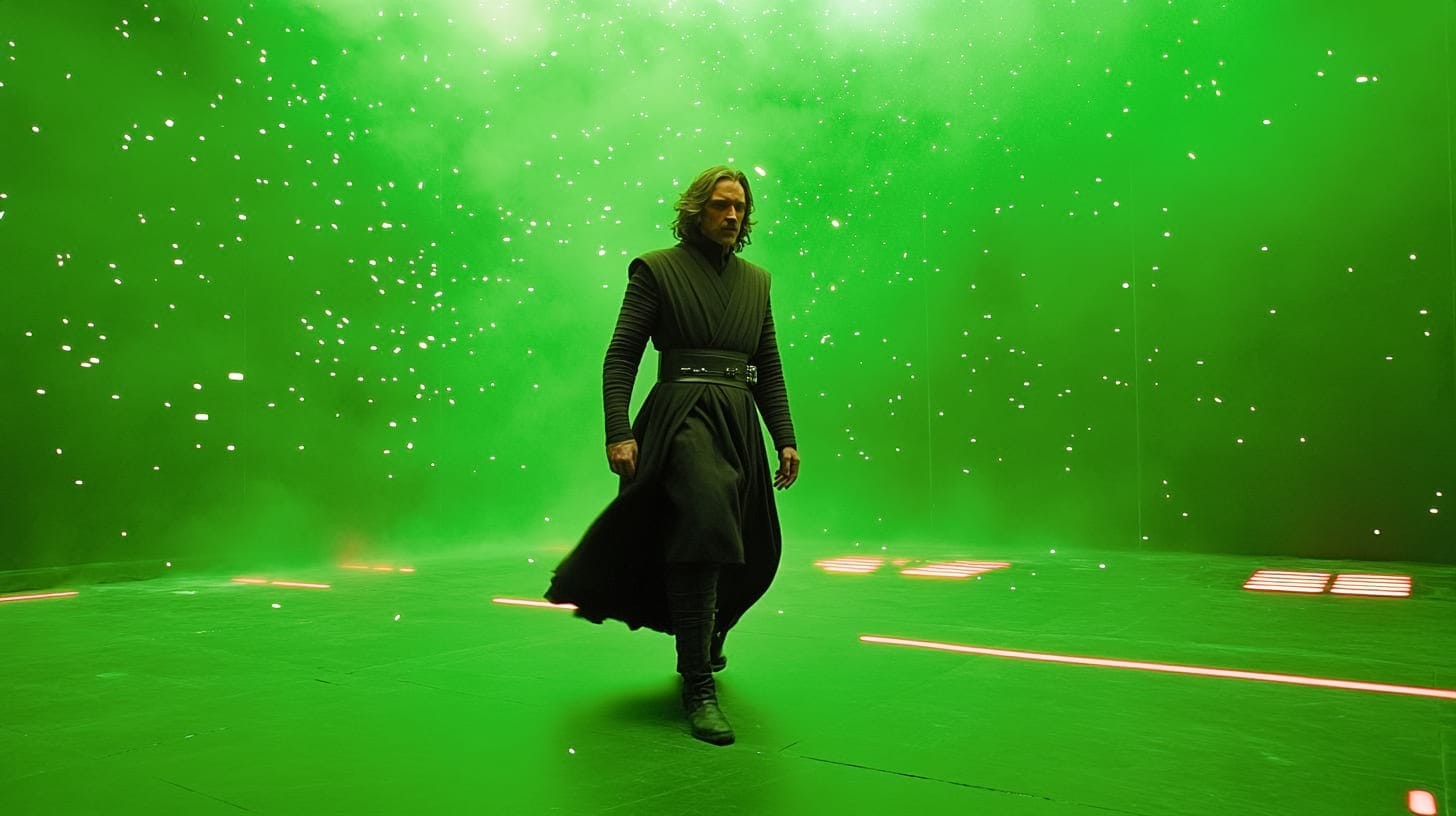VFX Breakdown: Behind the Scenes of Famous Movie Effects
Visual effects (VFX) have transformed modern filmmaking, turning extraordinary ideas into stunning cinematic reality. From CGI landscapes to mind-bending action sequences, VFX pushes creative boundaries. In this article, we explore the process behind iconic movie effects and their evolution.


In today’s blockbuster-filled cinema, the line between reality and fantasy is often blurred, thanks to the mesmerizing world of visual effects (VFX). Ever wondered how superheroes soar through the sky or how alien worlds come to life? That’s the magic of VFX — transforming the seemingly impossible into something breathtakingly real. Behind every jaw-dropping scene is an army of talented artists and cutting-edge technology, working together to push the boundaries of imagination.
VFX breakdowns give us a front-row seat to this world of creativity, showing how these iconic movie moments are crafted, one frame at a time. As technology evolves, VFX continues to dazzle audiences and redefine what’s possible on the silver screen.
The Evolution of VFX in Cinema ✨
The journey of visual effects (VFX) in cinema began with practical effects, where filmmakers relied on ingenious tricks like miniatures, matte paintings, and stop-motion animation to create otherworldly experiences. Early classics like "King Kong" (1933) used these techniques to bring larger-than-life creatures to the screen, captivating audiences. But it was the introduction of Computer Generated Imagery (CGI) that truly revolutionized the industry.
Films such as "Star Wars" (1977) and "Jurassic Park" (1993) were game-changers, introducing audiences to groundbreaking VFX techniques that blended seamlessly with live-action footage. "Star Wars" showcased the potential of visual effects on a galactic scale, while "Jurassic Park" stunned viewers with lifelike dinosaurs created through the marriage of CGI and animatronics. These films demonstrated the untapped potential of VFX, sparking an era of innovation and technological advancement.
As technology evolved, so did the complexity and realism of visual effects. Today, the use of motion capture, AI-driven effects, and real-time rendering has made it possible to create entire worlds from scratch. For more insights into the evolution of VFX and its role in filmmaking, explore this in-depth article on VFX in Filmmaking.
Famous VFX Scenes and How They Were Created 🎞️
Some of the most iconic moments in cinema owe their existence to the magic of visual effects (VFX), combining creativity with cutting-edge technology. Let’s take a closer look at how some of these famous scenes were brought to life.
🕶️ The Matrix (1999) – The Bullet Dodge Scene
The Wachowskis revolutionized VFX with "The Matrix", particularly in the groundbreaking "bullet-dodging" scene. To achieve the now-legendary shot of Neo bending backward as bullets whiz past him, the filmmakers employed an innovative technique called "bullet time." Using a rig of 120 cameras arranged in a circle around Keanu Reeves, they captured the scene from multiple angles simultaneously. These images were stitched together in post-production, creating a fluid, slow-motion effect that became a visual signature of the film. The combination of green screen technology, multiple camera angles, and seamless digital interpolation made this one of the most iconic VFX scenes in cinematic history.
🌍 Avatar (2009) – Pandora’s World
James Cameron's "Avatar" pushed the boundaries of CGI and motion capture, setting a new standard for VFX in filmmaking. The lush, alien world of Pandora was created entirely using CGI, with many of the characters, including the Na’vi, brought to life through performance capture. Actors wore motion capture suits fitted with sensors, allowing their movements and facial expressions to be recorded and translated into the digital realm. Cameron also used a “virtual camera” to direct his actors in real-time, making "Avatar" not only visually stunning but also a technological breakthrough in VFX scene creation.
💥 The Avengers (2012) – The Battle of New York
Marvel’s "The Avengers" showcased an epic fusion of live-action and CGI, particularly in the final battle of New York City. To create the larger-than-life Hulk and the invading Chitauri army, the VFX team at Industrial Light & Magic (ILM) utilized motion capture for Hulk’s movements, merging Mark Ruffalo’s performance with a digital version of the character. The cityscape was also digitally created using a combination of aerial footage and 3D models to provide an immersive, action-packed sequence that blended seamlessly with the live-action shots of the Avengers fighting.
🏙️ Inception (2010) – The Folding City
Christopher Nolan's "Inception" is renowned for its mind-bending VFX, especially the scene where the city of Paris folds over itself. To achieve this, the filmmakers combined practical effects with CGI. The folding effect was created digitally, but the meticulous camera work and physical sets ensured that the transition between reality and the digital environment was nearly imperceptible. The zero-gravity fight scene, another standout moment, relied heavily on practical effects — the set was built inside a rotating hallway, with minimal CGI used to enhance the final shot.
🦖 Jurassic Park (1993) – The T-Rex Attack
Steven Spielberg’s "Jurassic Park" remains a landmark in VFX history, blending animatronics with groundbreaking CGI. The T-Rex scene is a perfect example of this combination. A life-sized animatronic T-Rex was used for close-up shots, while CGI was employed to depict the dinosaur in full motion. This blend of practical and digital effects allowed the T-Rex to feel terrifyingly real, setting a new standard for realism in VFX.
Each of these films demonstrates how VFX scenes are carefully crafted using a mix of technology, artistry, and innovation. Whether through the pioneering use of motion capture, digital effects, or a seamless blend of CGI and practical effects, these iconic scenes have left a lasting impact on audiences and set the bar high for future filmmakers.
The Role of VFX Artists and Technology 💻
Behind every awe-inspiring visual effects (VFX) shot is a dedicated team of artists and advanced technology working in harmony. VFX artists, supervisors, and engineers use a variety of specialized tools to bring directors’ visions to life. Software such as Autodesk Maya for 3D modeling, Nuke for compositing, and Houdini for simulations are just a few of the industry’s mainstays. The intricate work of these professionals often involves creating everything from hyper-realistic creatures to fantastical environments.
Key to this process is collaboration. VFX artists must work hand-in-hand with the director, cinematographer, production designer, and often the sound team to ensure that the visual effects not only look great but also enhance the storytelling. The integration of VFX with other film departments is crucial for seamless transitions between practical footage and digital effects.
🎬 This is where tools like Filmustage play a significant role. Filmustage’s AI-driven platform helps streamline the pre-production process, automatically breaking down scripts and identifying scenes that will require VFX. By using this technology, VFX teams can save time and focus their energy on creative execution, knowing the planning has been handled efficiently. This enables smoother communication between the visual effects department and the production team, minimizing delays and ensuring VFX shots are completed on time and on budget.
In addition to software, cutting-edge technologies like motion capture, green screens, and virtual production tools such as Unreal Engine are revolutionizing the way VFX artists work. With AI and real-time rendering pushing boundaries, VFX artists have more tools than ever to create immersive, lifelike effects that captivate audiences worldwide.
The Future of VFX 🚀
As technology continues to evolve, the future of VFX looks more promising than ever. AI-driven VFX is set to revolutionize the industry, allowing for real-time rendering and virtual production that will change the way films are made. Virtual production techniques, such as those used in "The Mandalorian" (2019), allow filmmakers to shoot scenes in immersive virtual environments using game-engine technology like Unreal Engine.
This trend will likely continue, giving filmmakers even more creative freedom and the ability to push the boundaries of what can be achieved on screen. With the rise of AI and real-time rendering, the future of VFX is bright and full of exciting possibilities.
VFX has transformed the landscape of modern filmmaking, making the impossible possible. From iconic CGI moments to the latest technological innovations, visual effects have become a cornerstone of cinematic storytelling. As filmmakers continue to push the boundaries, VFX will undoubtedly remain at the heart of the movie magic we see on screen.
From Breakdown to Budget in Clicks
Save time, cut costs, and let Filmustage’s AI handle the heavy lifting — all in a single day.